Chart Color Schemes
est. as @ -- *
ABS ERP | -- people | --
2021 Census | -- people
Sales Activity
Curious about local property values? Filter the chart to assess the volume and appreciation (including resales) trends and regional comparisons, or scroll to the map below view this information at an individual property level.
Find a Recent Sale
Sales Detail
Population
Richardson has shown very soft population growth performance across periods assessed by AreaSearch
Richardson's population was approximately 2,992 as of August 2025. This figure represents a decrease of 66 people from the 2021 Census total of 3,058, indicating a 2.2% decline since that date. The change is inferred from ABS estimates and validated new addresses between June 2024 and the Census date. The population density was around 1,335 persons per square kilometer, higher than the average in comparable areas assessed by AreaSearch. While Richardson saw a 2.2% population decrease since the census, the SA3 area experienced a 0.2% growth, suggesting divergent trends within the region. Natural growth contributed approximately 66.3% of overall population gains during recent periods.
AreaSearch uses ABS/Geoscience Australia projections for each SA2 area, released in 2024 with a base year of 2022. For areas not covered by this data and years post-2032, age group growth rates from the ACT Government's SA2 area projections are adopted, using 2022 as the base year. Future population trends indicate an overall decline in the area's population, with a projected reduction of 171 persons by 2041. However, specific age cohorts are expected to grow, notably the 75 to 84 age group, which is projected to increase by 36 people over this period.
Frequently Asked Questions - Population
Development
The level of residential development activity in Richardson is very low in comparison to the average area assessed nationally by AreaSearch
Richardson has averaged approximately four new dwelling approvals annually over the past five financial years, totaling 21 homes. As of FY-26, no approvals have been recorded yet. Despite population decline during this period, housing supply has remained adequate relative to demand, resulting in a balanced market with good buyer choice.
Additionally, $56,000 in commercial development approvals have been recorded this financial year, reflecting the area's residential nature. Compared to the Australian Capital Territory, Richardson records about 59% of the building activity per person and ranks among the 30th percentile of areas assessed nationally, indicating more limited choices for buyers and supporting demand for existing dwellings. However, building activity has accelerated in recent years. Recent construction comprises 50.0% detached houses and 50.0% townhouses or apartments, representing a notable shift from the area's existing housing composition of 96.0% houses. This focus on higher-density living creates more affordable entry points for downsizers, investors, and first-home buyers.
Population projections indicating stability or decline suggest reduced housing demand pressures in Richardson, benefiting potential buyers.
Frequently Asked Questions - Development
Infrastructure
Richardson has moderate levels of nearby infrastructure activity, ranking in the 43rdth percentile nationally
Changes to local infrastructure significantly influence an area's performance. AreaSearch identified four projects likely impacting the area: Calwell Group Centre improvements, Banks Gateway Estate, Calwell Retirement Living Precinct, and Canberra Light Rail Stage 4 - Woden to Tuggeranong. The following list details those most relevant.
Professional plan users can use the search below to filter and access additional projects.
INFRASTRUCTURE SEARCH
 Denotes AI-based impression for illustrative purposes only, not to be taken as definitive under any circumstances. Please follow links and conduct other investigations from the project's source for actual imagery. Developers and project owners wishing us to use original imagery please Contact Us and we will do so.
Denotes AI-based impression for illustrative purposes only, not to be taken as definitive under any circumstances. Please follow links and conduct other investigations from the project's source for actual imagery. Developers and project owners wishing us to use original imagery please Contact Us and we will do so.
Frequently Asked Questions - Infrastructure
Low and Mid-Rise Housing Policy
State-wide NSW planning reforms via amendments to the State Environmental Planning Policy to enable more diverse low and mid-rise housing (dual occupancies, terraces, townhouses, manor houses and residential flat buildings up to 6 storeys) in well-located areas within 800 m of selected train, metro and light-rail stations and town centres. Stage 1 (dual occupancies in R2 zones statewide) commenced 1 July 2024. Stage 2 (mid-rise apartments, terraces and dual occupancies near stations) commenced 28 February 2025. Expected to facilitate up to 112,000 additional homes over the next five years.
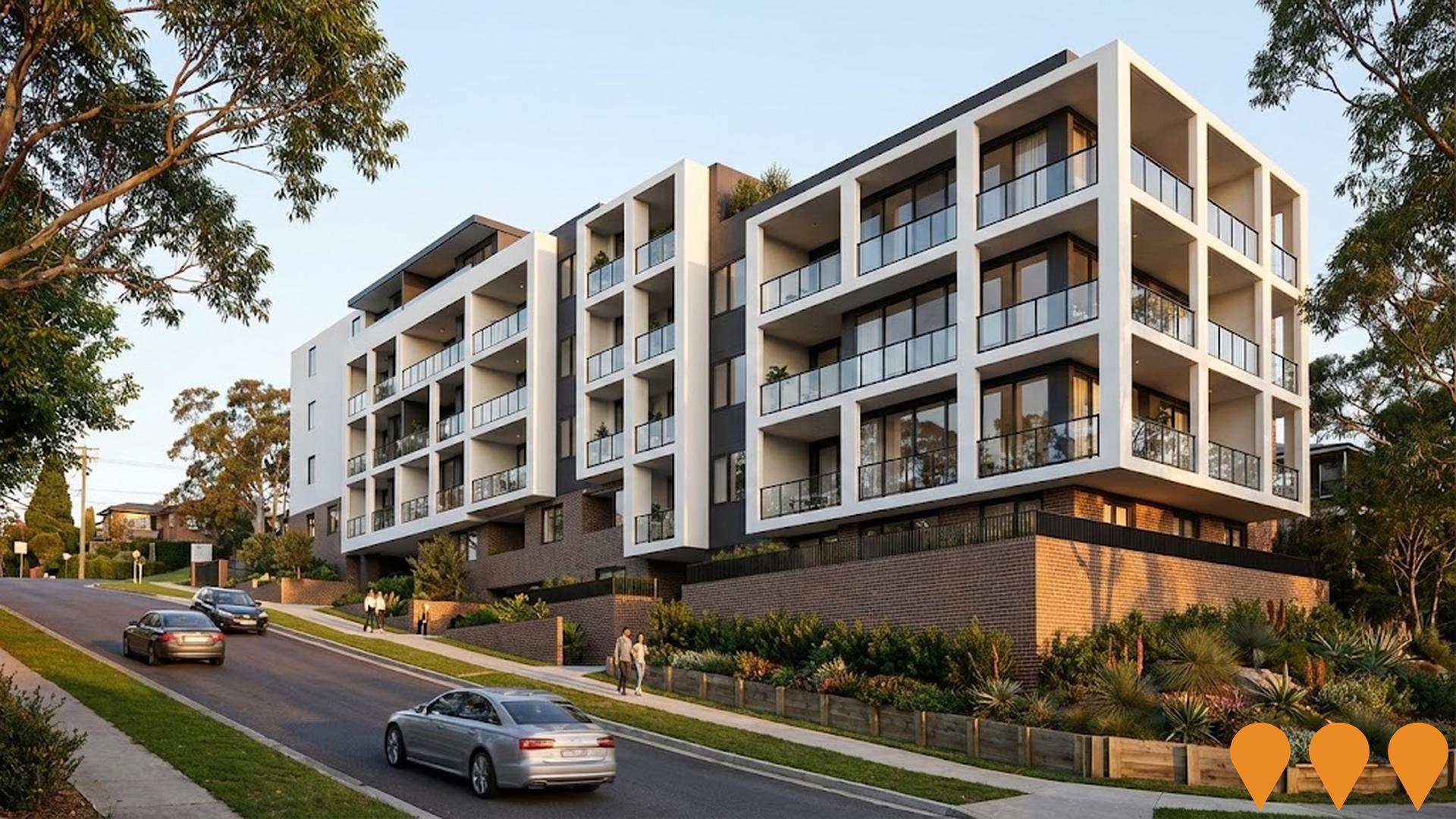
Canberra Light Rail Stage 4 - Woden to Tuggeranong
Proposed extension of Canberra's light rail network from Woden Town Centre south to Tuggeranong Town Centre via Mawson and the Athllon Drive corridor. This future stage aims to complete the north-south radial mass transit spine, connecting major residential, employment and activity centres while supporting bus, cycling, walking and private vehicle integration.
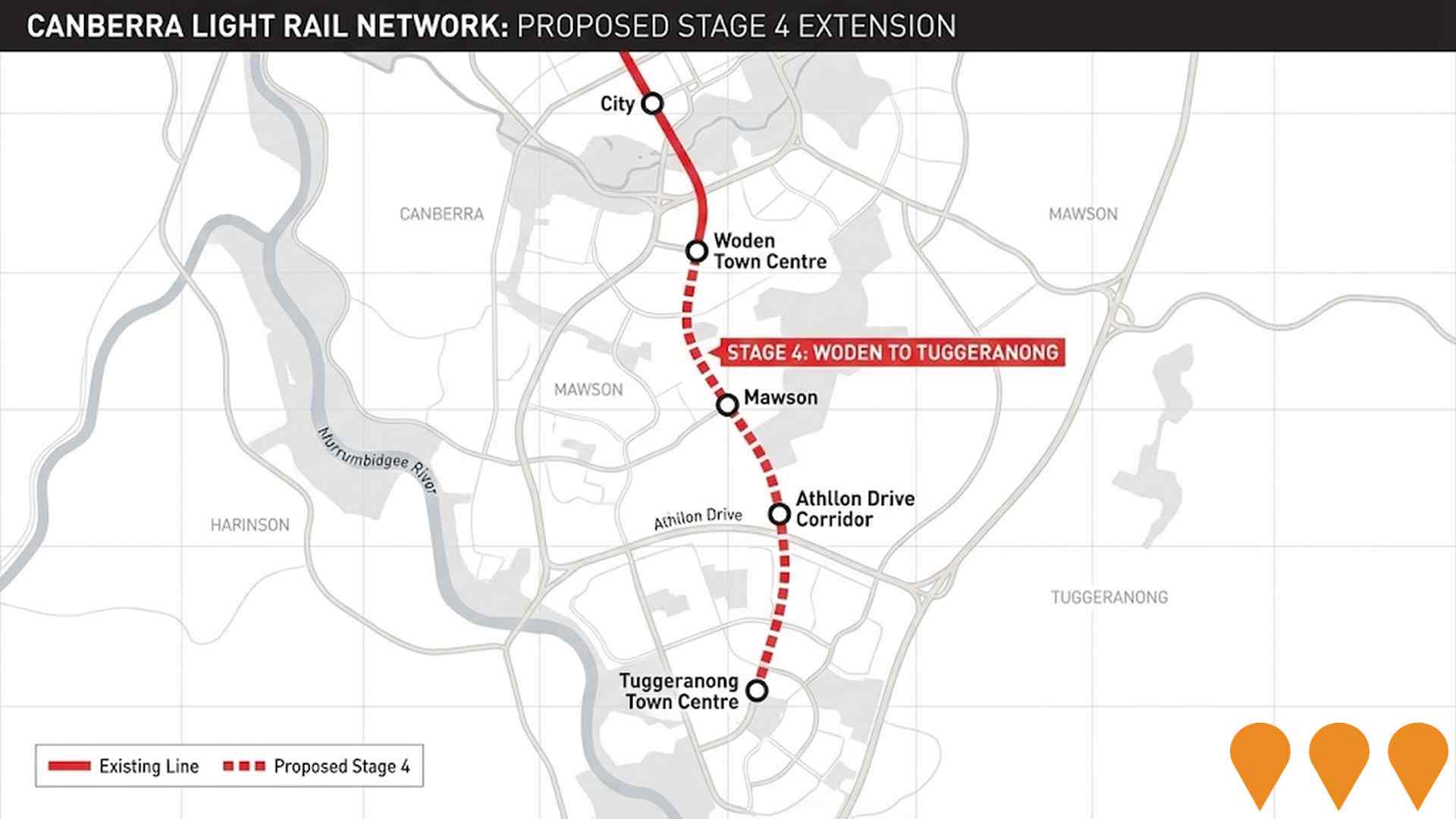
Enhanced bus and light rail corridors (Belconnen & Queanbeyan to Central Canberra)
ACT is progressing an integrated program to enhance high-frequency bus and future light rail corridors that link Belconnen and Queanbeyan with central Canberra. Light Rail Stage 2A (City to Commonwealth Park) commenced construction in early 2025 with services targeted from 2028, while planning and approvals continue for Stage 2B to Woden. The ACT Government has acknowledged and is planning upgrades for the Belconnen-to-City bus corridor as groundwork for a future east-west light rail Stage 3, and is coordinating cross-border public transport initiatives with NSW through the Queanbeyan Region Integrated Transport Plan and the ACT-NSW MoU for Regional Collaboration.
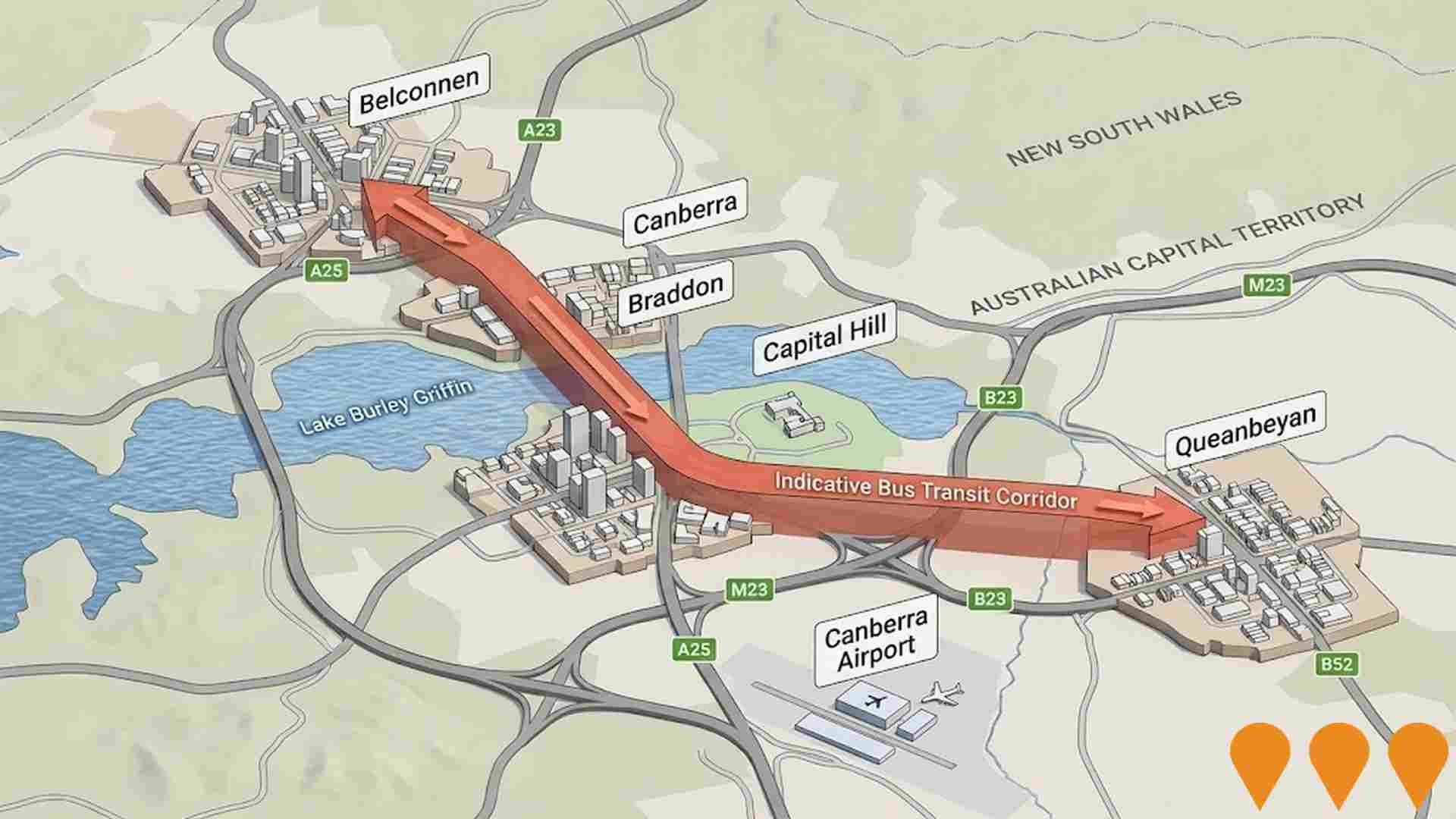
HumeLink
HumeLink is a new 500kV transmission line project connecting Wagga Wagga, Bannaby, and Maragle, spanning approximately 365 km. It includes new or upgraded infrastructure at four locations and aims to enhance the reliability and sustainability of the national electricity grid by increasing the integration of renewable energy sources such as wind and solar.
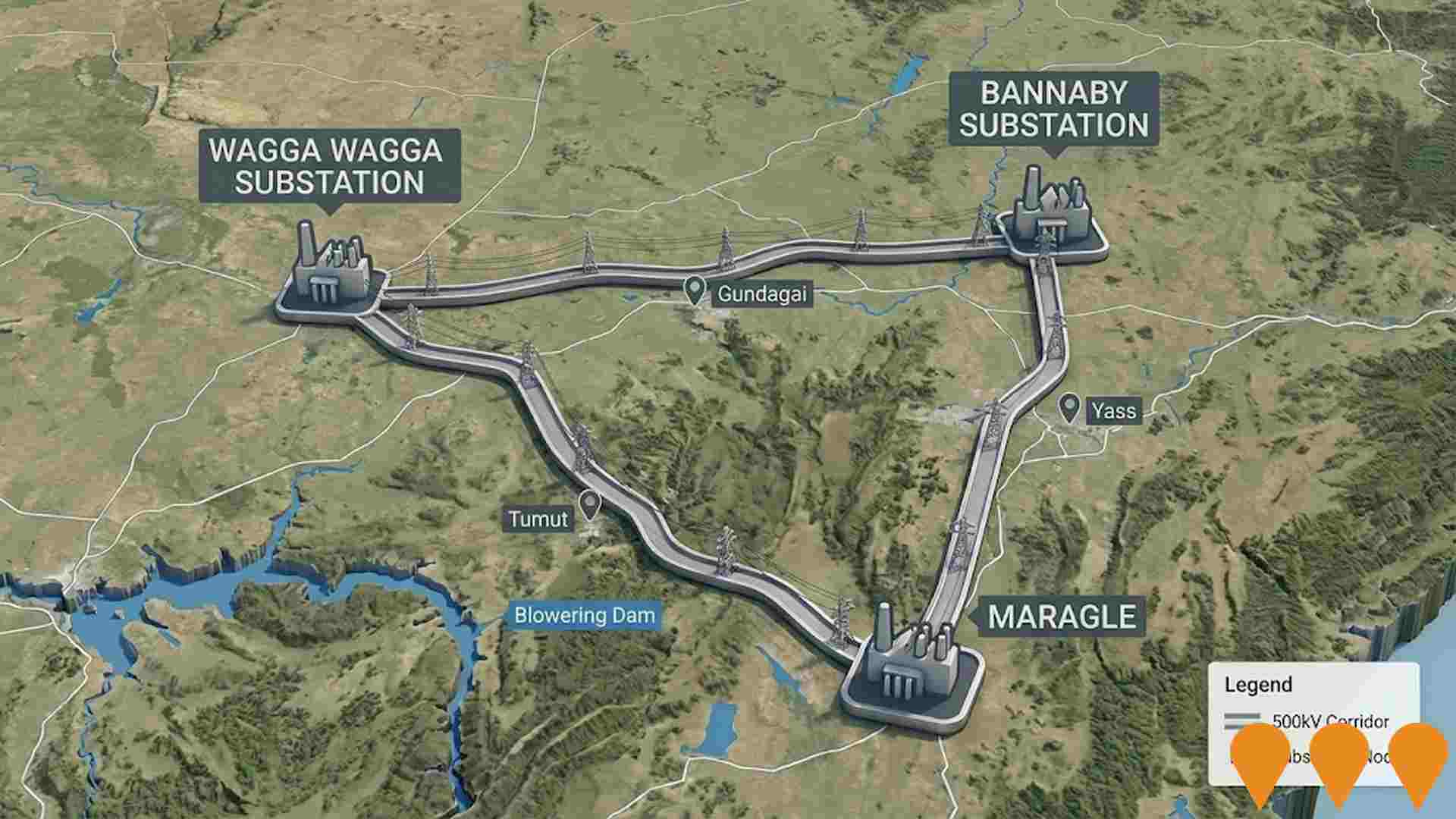
Queanbeyan Regional Integrated Transport Plan
Comprehensive transport planning initiative with 64 key actions for next 10 years. Addresses road safety, active transport connectivity, public transport availability, and future transport needs. Improved connections between Queanbeyan and ACT.
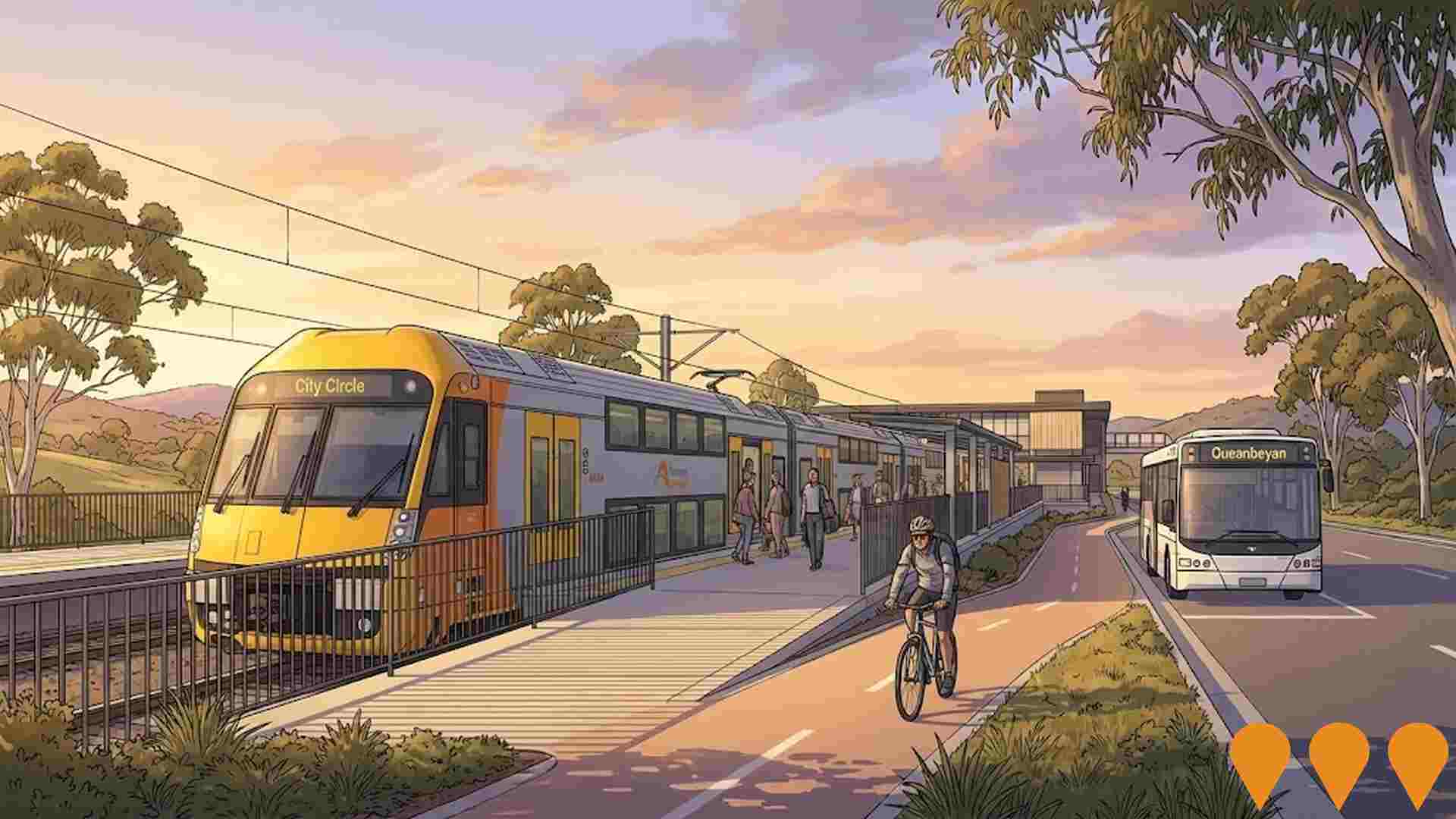
Big Canberra Battery (Williamsdale BESS)
A 250 MW / 500 MWh battery energy storage system at Williamsdale in southern Canberra, delivered by Eku Energy as Stream 1 of the ACT Government's Big Canberra Battery. Construction commenced in November 2024 with partners CPP and Tesla supplying Megapack systems. The asset will connect to Evoenergy's 132 kV network near the Williamsdale substation to provide two hours of dispatchable power, grid services and reliability for the ACT. Target operations in 2026.
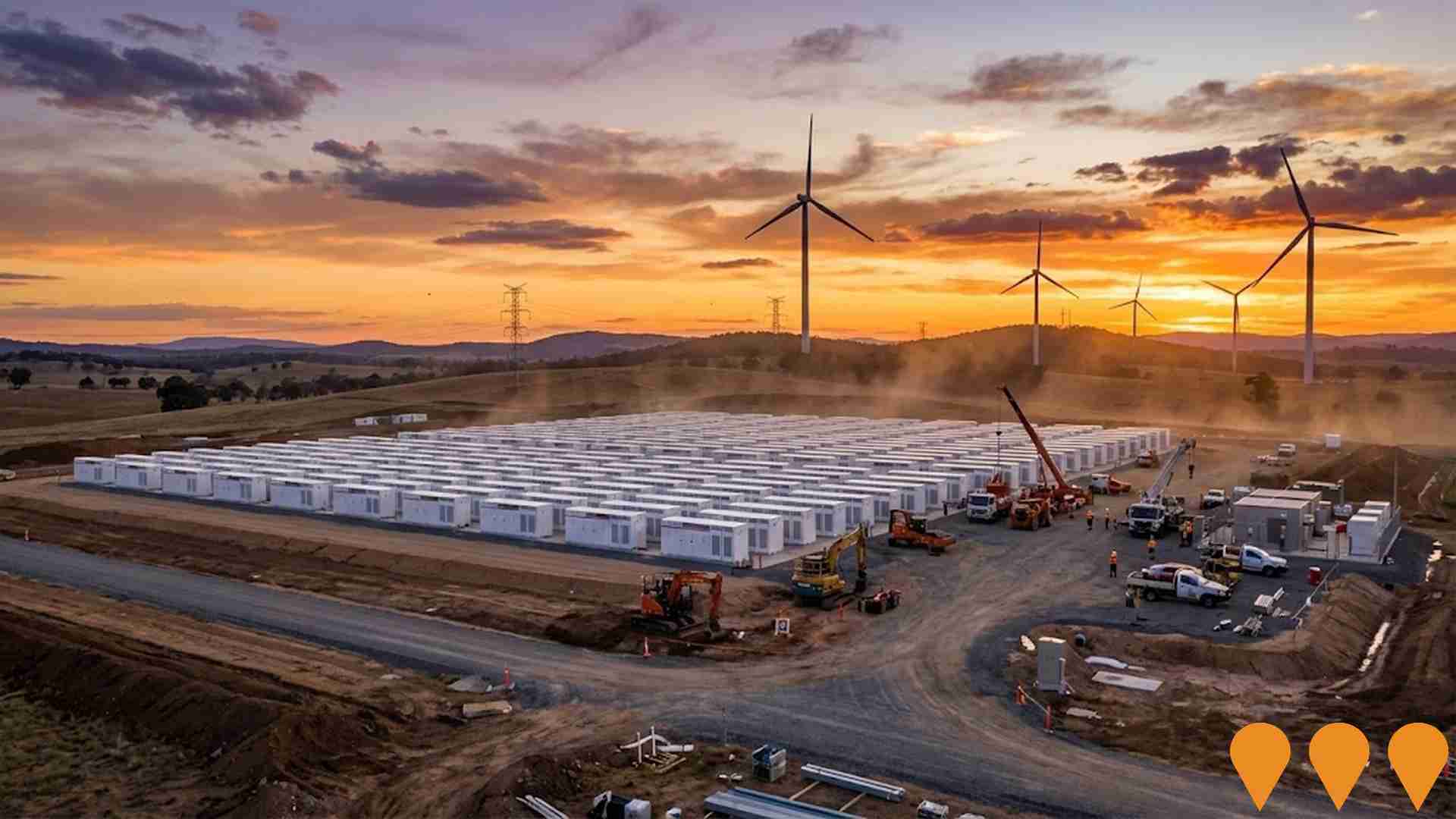
Lanyon Marketplace Improvements
Public space improvements completed in late 2023 at Lanyon Marketplace in Conder. The project, led by the ACT Government, included new seating and landscaping, improved pedestrian access (paths, pram ramps, safe crossings), a new raised intersection at Balcombe and Sidney Nolan Streets, and additional parking spaces on Sidney Nolan Street. The original record's mention of new Coles/Aldi/specialty stores appears to refer to an expected private sector expansion/refurbishment or is based on speculation, as the public works completed focused on the community space and access, with the Marketplace being anchored by Woolworths and 18 specialty shops. There is an ALDI store located at 9 Sidney Nolan Street nearby.

EV Fast Charging Infrastructure - Calwell (Calwell Shopping Centre)
Public DC fast EV charging delivered at Calwell Shopping Centre and operated by Evie Networks, supported by ACT Government grants and ARENA funding to expand Canberra's charging network.
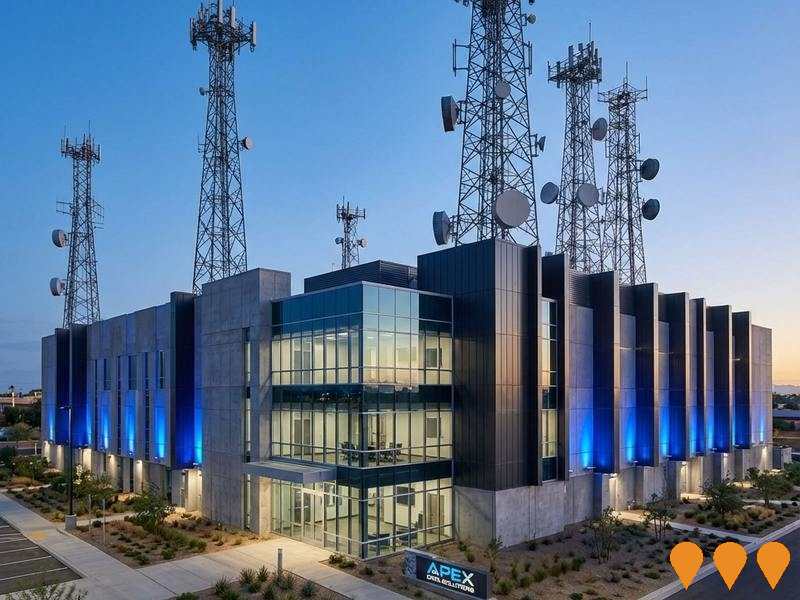
Employment
Richardson shows employment indicators that trail behind approximately 70% of regions assessed across Australia
Richardson's workforce comprises skilled individuals with notable representation in essential services sectors. The unemployment rate stood at 6.2% as of the past year, with an estimated employment growth of 3.7%.
As of June 2025, 1,634 residents were employed while the unemployment rate was 2.8% higher than the Australian Capital Territory's rate of 3.4%. Workforce participation in Richardson was broadly similar to that of the Australian Capital Territory at 69.6%. The leading employment industries among residents included public administration & safety, construction, and health care & social assistance. Richardson showed strong specialization in construction with an employment share of 2.0 times the regional level.
Conversely, public administration & safety was under-represented, with only 22.8% of Richardson's workforce compared to 30.4% in the Australian Capital Territory. The predominantly residential area appeared to offer limited local employment opportunities, as indicated by the count of Census working population versus resident population. Over the 12 months to June 2025, employment increased by 3.7% while labour force increased by 1.6%, leading to a fall in unemployment rate by 1.9 percentage points. In comparison, Australian Capital Territory saw employment rise by 1.9%, labour force grow by 1.6%, and unemployment fall by 0.3 percentage points. Jobs and Skills Australia's national employment forecasts from May 2025 provided further insight into potential future demand within Richardson. These projections estimated national employment growth of 6.6% over five years and 13.7% over ten years, with varying growth rates across industry sectors. Applying these industry-specific projections to Richardson's employment mix suggested local growth of approximately 6.4% over five years and 13.1% over ten years.
Frequently Asked Questions - Employment
Income
Income metrics indicate excellent economic conditions, with the area achieving higher performance than 75% of national locations assessed by AreaSearch
Richardson's median income among taxpayers was $59,751 in financial year 2022. The average income stood at $66,221 during the same period. Compared to Australian Capital Territory's figures of $68,678 and $83,634 respectively, Richardson's incomes were lower. Based on Wage Price Index growth of 13.6% since financial year 2022, estimated median income would be approximately $67,877 and average income around $75,227 by September 2025. Census 2021 income data shows that incomes in Richardson cluster around the 74th percentile nationally. Income analysis reveals that 38.6% of the population (1,154 individuals) fall within the $1,500 - 2,999 income range, similar to the broader area where 34.3% occupy this range. High housing costs consume 15.7% of income in Richardson. Despite this, disposable income remains at the 69th percentile nationally. The area's SEIFA income ranking places it in the 5th decile.
Frequently Asked Questions - Income
Housing
Richardson is characterized by a predominantly suburban housing profile, with a higher proportion of rental properties than the broader region
Richardson's dwelling structure, as per the latest Census, consisted of 95.7% houses and 4.3% other dwellings. In comparison, the Australian Capital Territory had 79.6% houses and 20.4% other dwellings. Home ownership in Richardson was at 26.5%, with mortgaged dwellings at 47.8% and rented ones at 25.6%. The median monthly mortgage repayment in the area was $2,000, aligning with the Australian Capital Territory average. The median weekly rent figure was $391, compared to the Australian Capital Territory's $425. Nationally, Richardson's mortgage repayments were higher at $2,000 compared to the Australian average of $1,863, and rents exceeded the national figure of $375.
Frequently Asked Questions - Housing
Household Composition
Richardson has a typical household mix, with a fairly typical median household size
Family households constitute 75.0% of all households, including 33.3% couples with children, 23.4% couples without children, and 16.4% single parent families. Non-family households comprise the remaining 25.0%, with lone person households at 22.8% and group households making up 2.4%. The median household size is 2.6 people, which aligns with the Australian Capital Territory average.
Frequently Asked Questions - Households
Local Schools & Education
Educational outcomes in Richardson fall within the lower quartile nationally, indicating opportunities for improvement in qualification attainment
The area faces educational challenges, with university qualification rates at 21.3%, significantly below the SA4 region average of 46.8%. This presents both a challenge and an opportunity for targeted educational initiatives. Bachelor degrees are the most common, at 14.0%, followed by postgraduate qualifications (4.8%) and graduate diplomas (2.5%). Trade and technical skills are prominent, with 37.2% of residents aged 15+ holding vocational credentials – advanced diplomas (11.7%) and certificates (25.5%).
Educational participation is high, with 29.2% of residents currently enrolled in formal education. This includes 10.6% in primary, 7.9% in secondary, and 3.4% in tertiary education. Richardson Primary School serves the local area, with an enrollment of 140 students as of a recent report. The school operates under typical Australian school conditions (ICSEA: 951) and offers balanced educational opportunities. It focuses exclusively on primary education, with secondary options available in nearby areas. Local school capacity is limited, with 4.7 places per 100 residents compared to the regional average of 14.9, leading many families to travel for schooling.
Frequently Asked Questions - Education
Schools Detail
Nearby Services & Amenities
Transport
Transport servicing is good compared to other areas nationally based on assessment of service frequency, route connectivity and accessibility
Richardson has 28 active public transport stops operating within its boundaries. These stops are served by a mix of bus routes totaling eight individual routes. Combined, these routes facilitate 1,152 weekly passenger trips.
The accessibility of public transport in Richardson is rated excellent, with residents on average located 182 meters from the nearest transport stop. On average, there are 164 trips per day across all routes, which equates to approximately 41 weekly trips per individual stop.
Frequently Asked Questions - Transport
Transport Stops Detail
Health
Health performance in Richardson is lower than average with common health conditions somewhat prevalent across both younger and older age cohorts
Richardson faces significant health challenges, with common health conditions prevalent across both younger and older age cohorts. The rate of private health cover is approximately 52% of the total population (~1,567 people), leading that of the average SA2 area but lower than the 57.2% across Australian Capital Territory.
Mental health issues impact 10.0% of residents, while arthritis affects 8.6%. A total of 66.3% declare themselves completely clear of medical ailments, similar to the 66.1% across Australian Capital Territory. The area has 14.4% of residents aged 65 and over (430 people), lower than the 17.6% in Australian Capital Territory. Health outcomes among seniors present some challenges, broadly in line with the general population's health profile.
Frequently Asked Questions - Health
Cultural Diversity
The level of cultural diversity witnessed in Richardson was found to be above average when compared nationally for a number of language and cultural background related metrics
Richardson's population shows above-average cultural diversity, with 21.8% born overseas and 17.5% speaking a language other than English at home. Christianity is the predominant religion in Richardson, accounting for 46.5%. Islam, however, is overrepresented compared to the Australian Capital Territory average of 2.4%, comprising 3.3% of Richardson's population.
The top three ancestry groups are Australian (27.6%), English (24.7%), and Other (9.2%). Notably, Hungarian (0.6%) and Serbian (0.6%) populations in Richardson exceed the regional averages of 0.3% and 0.4%, respectively. Spanish speakers also show a slight overrepresentation at 0.8%.
Frequently Asked Questions - Diversity
Age
Richardson's population is slightly younger than the national pattern
Richardson's median age is approximately 36 years, nearly matching the Australian Capital Territory average of 35 but somewhat younger than Australia's median age of 38. Compared to the Australian Capital Territory, Richardson has a higher proportion of residents aged 65-74 (10.1%), but fewer residents aged 15-24 (11.4%). Between the 2021 Census and the current period, the proportion of residents aged 65-74 has grown from 8.6% to 10.1%, while the proportion of residents aged 0-4 has increased from 6.2% to 7.5%. Conversely, the proportion of residents aged 55-64 has declined from 12.7% to 10.8%, and the proportion of residents aged 5-14 has dropped from 13.8% to 12.3%. Population forecasts for the year 2041 indicate significant demographic changes in Richardson. The 75-84 age cohort is projected to have the strongest growth, increasing by 29% and adding 30 residents to reach a total of 135. Residents aged 65 and above are expected to drive 87% of population growth, reflecting broader demographic aging trends. Conversely, population declines are projected for the 85+ age cohort and the 45-54 age cohort.




